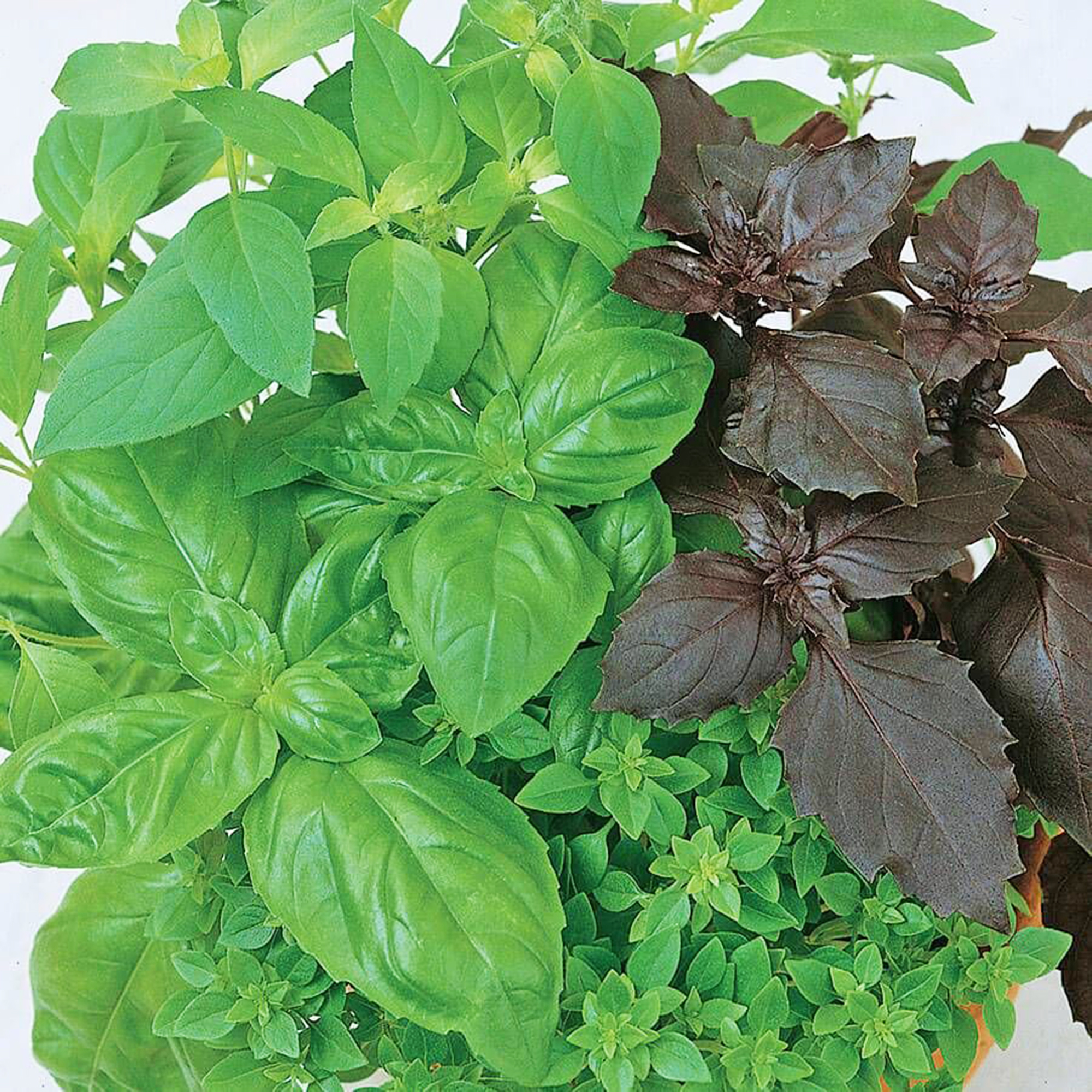How To Grow A Countertop Herb Garden – For A Fresh Kitchen Harvest Year-Round
Whether you opt for a smart grow kit or a few simple pots, a countertop herb garden will elevate your kitchen and keep fresh ingredients close to hand in every season.

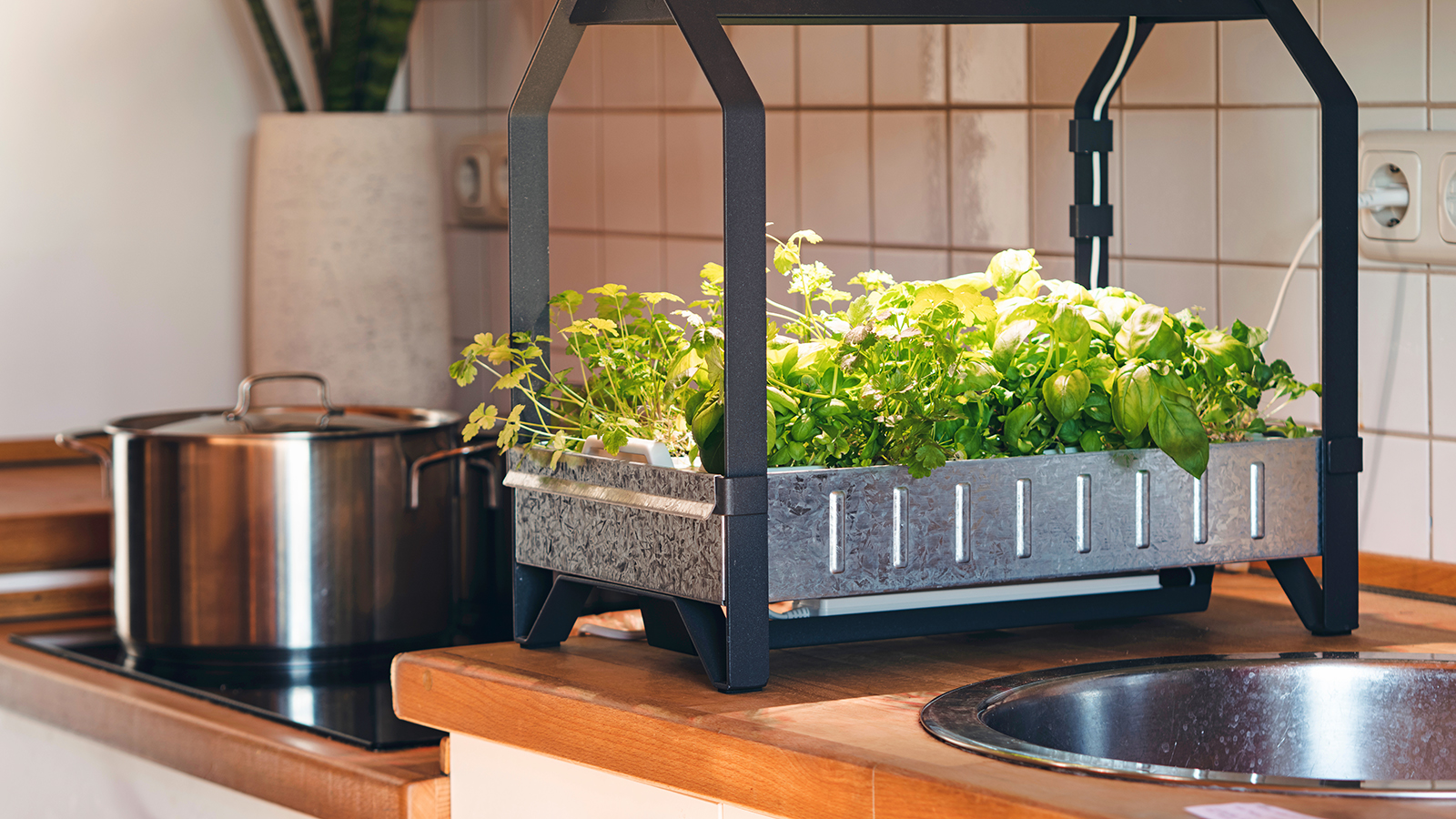
Imagine the joy of snipping fresh basil, mint, or thyme right from your kitchen countertop while cooking up your favorite dishes. With a countertop herb garden, you can grow a constant supply of delicious varieties to harvest throughout the seasons.
Not only is growing an indoor herb garden a rewarding and enjoyable activity, but it is extremely convenient to have these fresh flavors so close to hand. It’s an ideal solution for gardeners with limited outdoor space – even if you don’t have room to grow herbs in pots on the patio or plant an edible window box, you can always squeeze in a few countertop herbs.
In addition, growing herbs in the kitchen is a simple way to add a touch of green to the space, creating a warm and inviting atmosphere. Whether you’re an experienced gardener or new to growing herbs, it's easy to get started.

Best Herbs to Grow on the Countertop
Many herbs are well-suited for indoor growing, offering a variety of flavors and scents to your kitchen. Some of the best herbs for a countertop garden include:
- Basil is a staple in many dishes. It grows quickly and loves warmth and sunlight.
- Thyme is a hardy herb with small leaves and a woody stem. It thrives indoors and adds depth to savory dishes.
- Mint is refreshing and fast-growing – perfect for teas, desserts, and cocktails.
- Parsley – flat-leaf or curly – is a versatile herb that grows well in pots and is perfect for garnishing or adding fresh flavor to meals.
- Chives are mild, onion-flavored herbs that are easy to grow and perfect for sprinkling over salads, soups, and baked potatoes.
- Cilantro is a fresh, citrusy herb that’s great for salsas and Asian cuisine, though it can be temperamental and may require extra light and care indoors.
Indoor Herb Garden Requirements
Herbs need plenty of light to grow – ideally six hours of sunlight each day. Since kitchen countertops often don’t receive direct sunlight, placing your herbs near a south-facing window or supplementing with a grow light will ensure they stay healthy.
Space is another consideration. While herbs don’t require a lot of room, they do need some airflow around them to avoid mold and mildew. Choose containers that fit comfortably on your countertop and aren’t too crowded. Herbs like to spread out a bit, so avoid cramming too many in one small pot. Some of the best herbs to plant together in one pot include basil, oregano, and parsley – perfect for an Italian theme.
The right soil mix is essential – opt for a well-draining potting soil, as herbs don’t like to sit in water. They prefer consistently moist but not overly wet soil.
Sign up for the Gardening Know How newsletter today and receive a free copy of our e-book "How to Grow Delicious Tomatoes".
Fertilizing lightly every few weeks during the growing season will keep herbs productive and flavorful, but be careful not to overdo it, as too much fertilizer can impact taste.
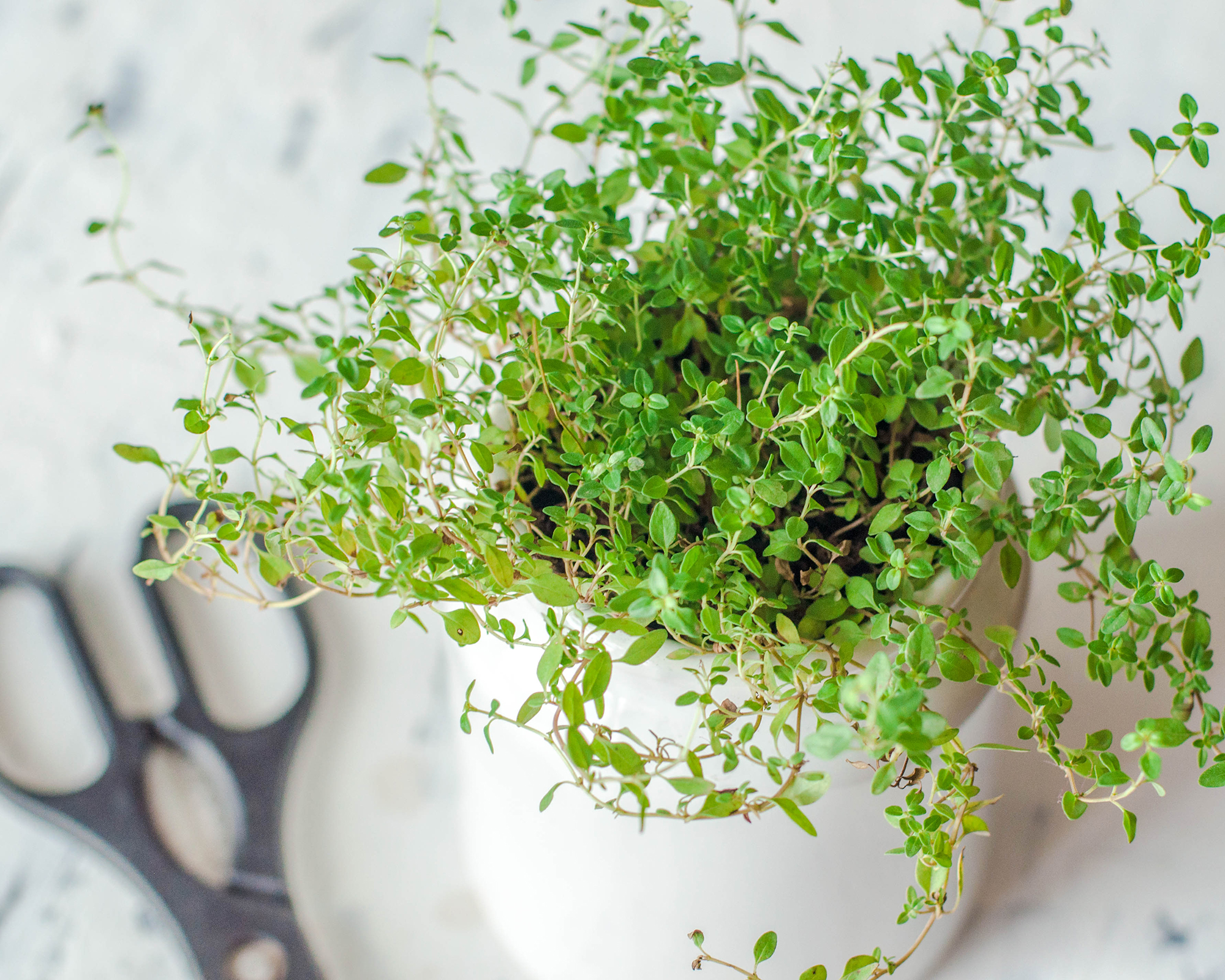
Should I Buy a Growing Kit?
Countertop herb garden kits are designed to take the guesswork out of growing herbs indoors and make an attractive feature in a modern kitchen.
These systems often come with built-in LED lights, automatic watering features, and pre-seeded pods, making them ideal for those who want a low-maintenance option. Some are also designed to grow herbs hydroponically, without potting soil.
However, these systems can be costly, with some high-end models reaching hundreds of dollars. While they certainly simplify the process, they aren’t necessary for everyone. If you’re comfortable with watering and checking on your plants regularly, you can grow herbs just as successfully without the expense of a commercial system.
Plus, creating your own herb garden from scratch allows for more customization and creativity in terms of pots, layout, and the types of herbs you grow.
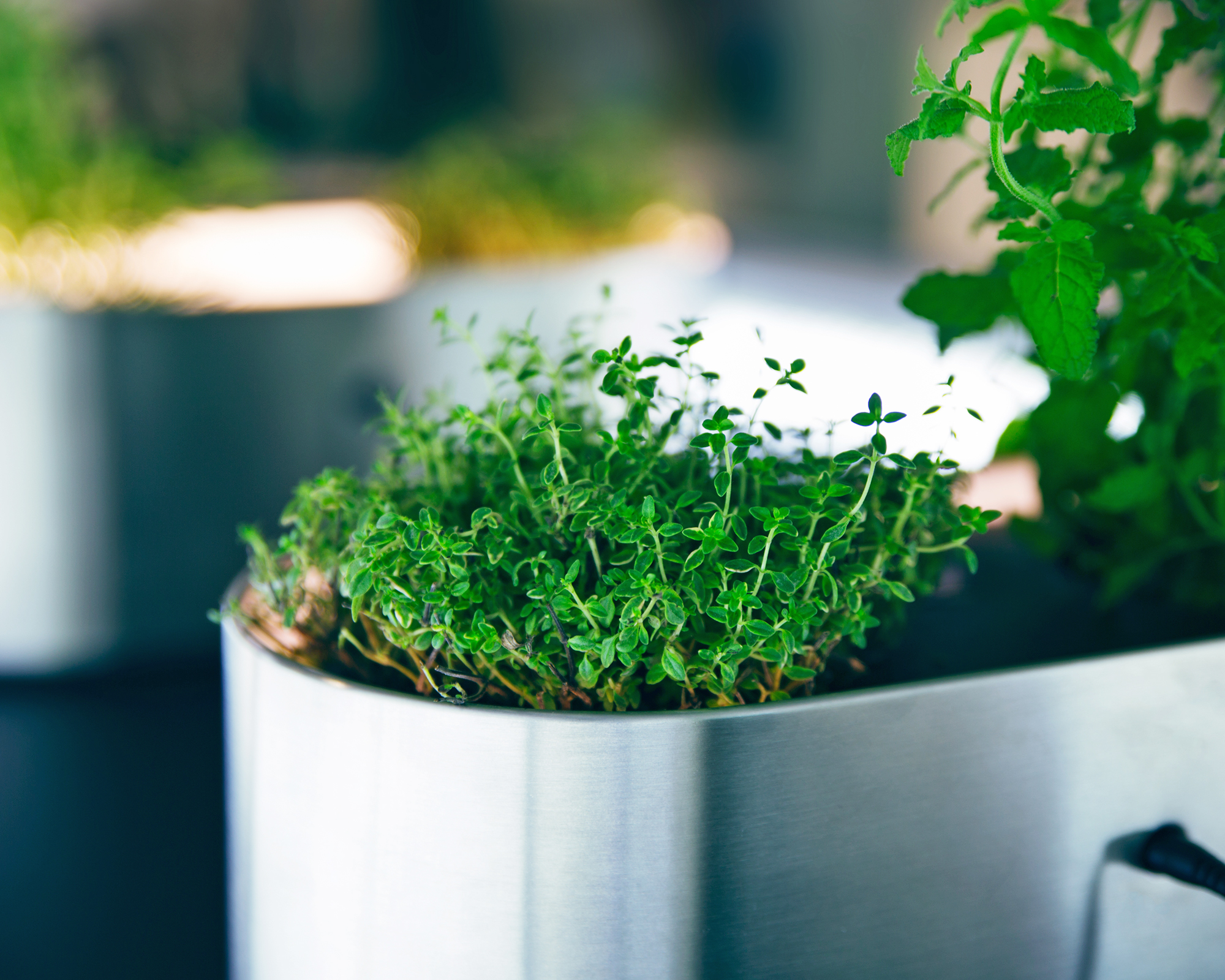
Creating a DIY Countertop Herb Garden
Setting up a DIY herb garden on your countertop is a fun and budget-friendly project. Start by choosing a selection of small pots or containers that fit your space and style – anything from terracotta pots to mason jars will work, as long as they have drainage holes. Consider placing the pots on a drainage tray filled with pebbles to prevent water from sitting in the soil.
Once your pots are ready, fill them with a light, well-draining potting mix, and plant your chosen herbs. Either select small plants from a nursery or start herbs from seeds for the ultimate rewarding home-growing experience.
Place your containers near a window that gets plenty of light, and if natural light is limited, invest in a small grow light to keep them thriving.
Make sure to leave enough space between the pots for easy access and to avoid overcrowding. You can even use tiered shelves or hanging baskets to maximize your space and create a beautiful, vertical herb display.

Do I Need a Grow Light?
Unless you can position your herbs next to a sunny window, you will need to provide a supplementary light source.
LED grow lights are energy efficient, long-lasting and emit little heat, making them ideal for small kitchens. They can be customized to provide the full light spectrum that herbs need, including both blue light for foliage growth and red light for flowering. Some LED grow lights are even adjustable, allowing you to tailor the light to your herbs’ specific needs.
Fluorescent grow lights are usually more affordable. They produce low heat and provide the blue spectrum light that herbs thrive on. However, they tend to be bulkier than LEDs and require replacing more frequently.
Full spectrum grow lights provide the complete range of light wavelengths that plants need. They are ideal for herb gardens as they most closely recreate sunlight, and support all stages of growth. Full spectrum lights are often LED-based and can either be standalone fixtures or bulbs.
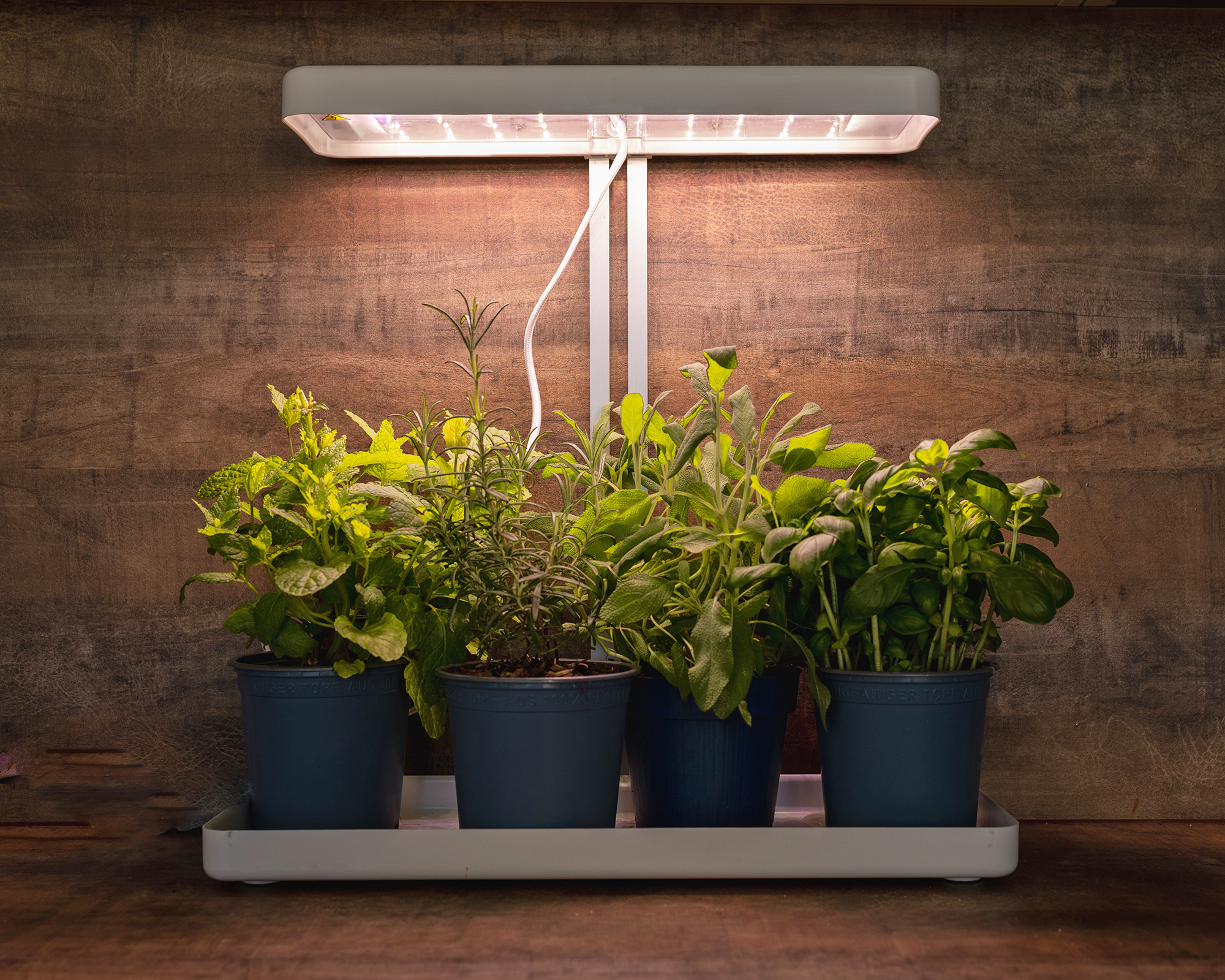
Care and Maintenance
Once your herb garden is up and growing, proper care will keep your plants lush and productive. Watering is the most important task – most herbs prefer slightly dry conditions, so avoid overwatering. Allow the top inch of soil to dry out before watering again, and make sure to drain excess water from the pots
Regular pruning is essential to prevent your herbs from becoming leggy and to encourage new growth. Don’t be afraid to snip off leaves frequently, as herbs respond well to regular harvesting.
Keep an eye out for pests on herbs, such as aphids or spider mites, which can sometimes find their way indoors. If you notice any, a gentle spray of water or a mild, homemade insecticidal soap should take care of the problem.
Lastly, remember to rotate your plants regularly so all sides receive equal sunlight, and consider adding a light dose of fertilizer once a month to ensure your herbs remain healthy and flavorful.

Melanie is an experienced gardener and has worked in homes and gardens media for over 20 years. She previously served as Editor on Period Living magazine, and worked for Homes & Gardens, Gardening Etc, Real Homes, and Homebuilding & Renovating. Melanie has spent the last few years transforming her own garden, which is constantly evolving as a work in progress. She is also a passionate organic home grower, having experimented with almost every type of vegetable at some point. In her home, Melanie tends to an extensive houseplant collection and is particularly fond of orchids.
